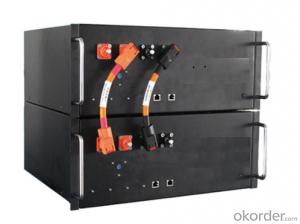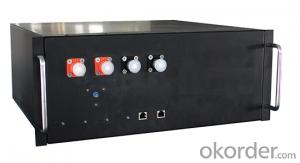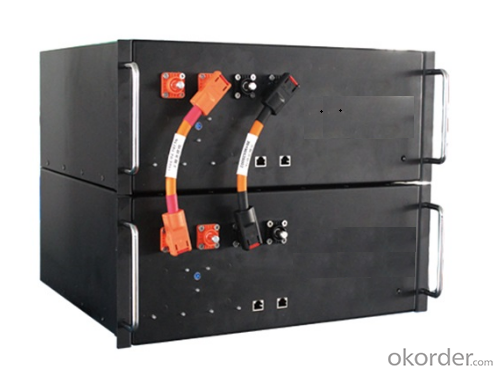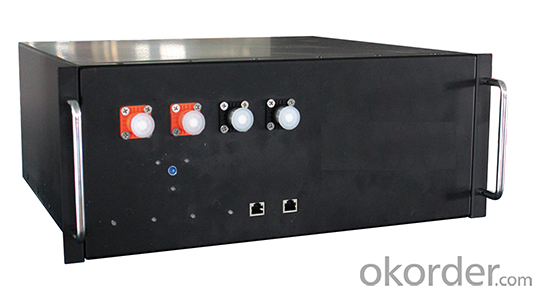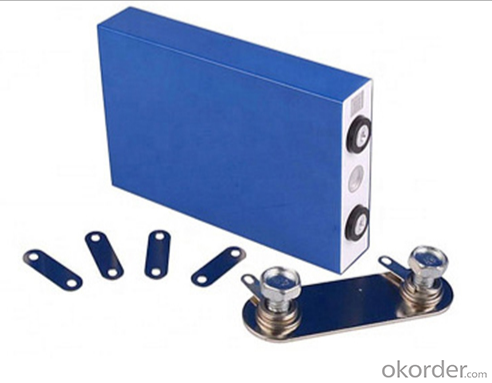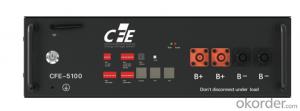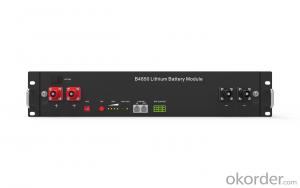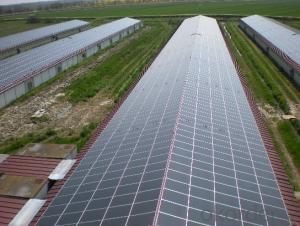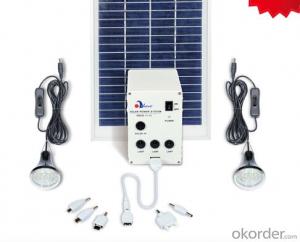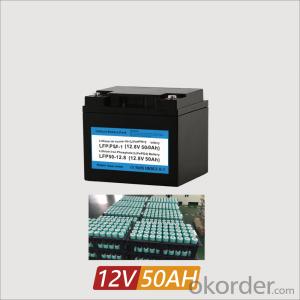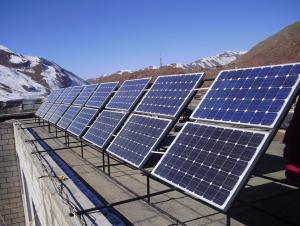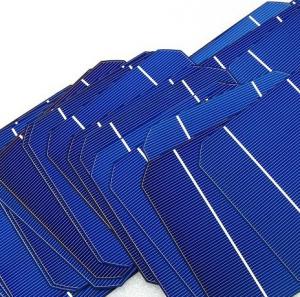Solar Cells Wholesale CNBM 51.2V 50AH -2560Wh Solar Lithium Battery Storage
- Loading Port:
- China main port
- Payment Terms:
- TT OR LC
- Min Order Qty:
- 10 set
- Supply Capability:
- 10000 set/month
OKorder Service Pledge
Quality Product, Order Online Tracking, Timely Delivery
OKorder Financial Service
Credit Rating, Credit Services, Credit Purchasing
You Might Also Like
Specification
Material:
battery
Max. Power(W):
2560
Number of Cells(pieces):
1
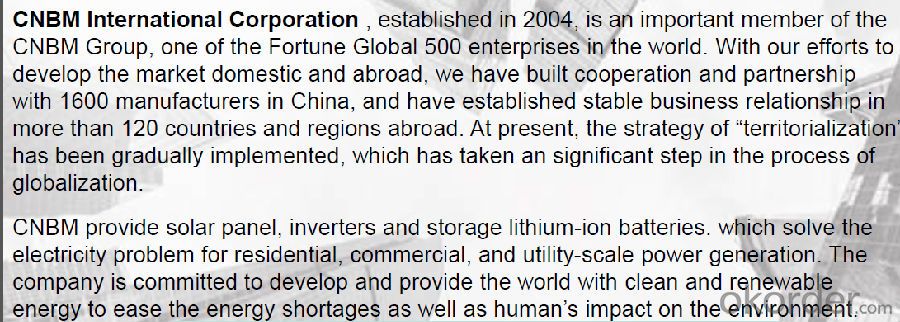

- Q: How can the huge solar cells be applied into the market?
- The huge solar cells are more used in the industrial project, which needs more power supply in one time. Without the huge solar cells, it might not be able to work at all.
- Q: Where and how can we find the best solar cells suppliers?
- The good solar cell supplier won't just show up at your door, you need to dive into the solar cell market and get to know them by visiting the factories.
- Q: How do solar cells perform in regions with high levels of humidity and rainfall?
- Solar cells can still perform well in regions with high levels of humidity and rainfall. While humidity may slightly decrease the efficiency of solar cells, modern designs and materials are developed to withstand these conditions. Additionally, rainfall can actually be beneficial as it helps to clean the solar panels, removing dust and dirt that may accumulate on the surface. Overall, solar cells can still generate electricity effectively in regions with high humidity and rainfall, although their performance may be slightly affected.
- Q: What is the payback period for solar cell installations?
- The payback period for solar cell installations varies depending on factors such as the cost of the installation, the amount of energy generated and consumed, and any applicable incentives or subsidies. On average, it can range from 5 to 10 years, but it is important to conduct a specific analysis considering individual circumstances to determine the accurate payback period for a given solar cell installation.
- Q: What is a multi-junction solar cell?
- A multi-junction solar cell is a type of solar cell that is composed of multiple layers of semiconductor materials, each with a different energy bandgap. This allows the cell to efficiently capture a wider range of solar radiation by converting different wavelengths of light into electricity. Hence, multi-junction solar cells can achieve higher conversion efficiencies compared to traditional single-junction solar cells.
- Q: Can solar cells be used in off-grid applications?
- Yes, solar cells can definitely be used in off-grid applications. Off-grid systems rely on solar energy to generate electricity, making solar cells an ideal and sustainable solution for powering remote locations, cabins, boats, and other off-grid setups. Solar cells capture sunlight and convert it into electrical energy, which can then be stored in batteries for use during periods of low or no sunlight. With advancements in technology, solar cells have become more efficient and affordable, making them a practical choice for off-grid applications.
- Q: What is the effect of wind on solar cell performance?
- The effect of wind on solar cell performance can be both positive and negative. On one hand, wind can help cool the solar cells, preventing overheating and improving their overall efficiency. Additionally, wind can help clean the surface of the solar panels, removing dust and debris that may obstruct sunlight and reduce energy production. On the other hand, strong winds can create vibrations and mechanical stress on the solar panels, potentially damaging their structure or causing misalignment. Therefore, while some wind is beneficial for solar cell performance, excessive or turbulent wind conditions may have a detrimental impact.
- Q: Can solar cells be used in space exploration?
- Yes, solar cells can be used in space exploration. Solar cells are commonly used in satellites and spacecraft as a reliable and efficient source of power. They convert sunlight into electricity, allowing space missions to operate their electronic systems and power their equipment. Solar cells are a key component in providing sustainable energy for space exploration missions.
- Q: Can solar cells be used in off-grid cabins or cottages?
- Yes, solar cells can definitely be used in off-grid cabins or cottages. Solar panels can generate electricity by converting sunlight into usable energy, which can then be stored in batteries for later use. This makes them an excellent choice for powering remote locations like off-grid cabins or cottages where access to the electrical grid may be limited or non-existent.
- Q: Can solar cells be used for powering remote research stations in Antarctica?
- Yes, solar cells can be used for powering remote research stations in Antarctica. Solar cells are a sustainable and reliable source of energy that can harness the abundant sunlight available in Antarctica during the summer months. They can provide a consistent power supply to run essential equipment and facilities at remote research stations, reducing the dependence on fossil fuels and minimizing the environmental impact. Additionally, advancements in solar technology have improved the efficiency and durability of solar cells, making them a viable option for powering these isolated stations in extreme conditions.
Send your message to us
Solar Cells Wholesale CNBM 51.2V 50AH -2560Wh Solar Lithium Battery Storage
- Loading Port:
- China main port
- Payment Terms:
- TT OR LC
- Min Order Qty:
- 10 set
- Supply Capability:
- 10000 set/month
OKorder Service Pledge
Quality Product, Order Online Tracking, Timely Delivery
OKorder Financial Service
Credit Rating, Credit Services, Credit Purchasing
Similar products
Hot products
Hot Searches
Related keywords

